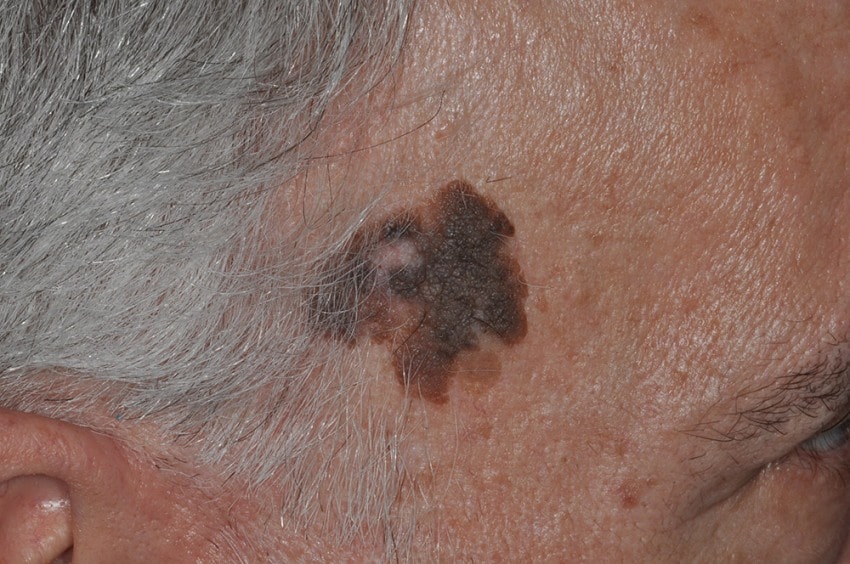What is seborrhoeic keratosis?
Seborrhoeic keratoses are the most common benign tumour in older individuals. Seborrheic keratoses have a variety of clinical appearances and they develop from the proliferation of epidermal cells. No specific aetiologic factors have been identified in relation to their development.
Pathophysiology
The cause of seborrhoeic keratosis is not known. Seborrheic keratoses exhibit histologic evidence of epidermal cell proliferation. Increased cell replication has been demonstrated in seborrhoeic keratoses with bromodeoxyuridine incorporation studies and immunohistochemistry for proliferation-associated antigens. A modest increase is observed in the rate of skin cell apoptosis in all varieties of seborrheic hyperkeratosis as compared to normal skin.
Seborrhoeic keratoses have a varying degree of pigmentation. In pigmented seborrhoeic keratoses, the proliferating keratinocytes trigger the activation of neighbouring melanocytes by secreting melanocyte-stimulating cytokines. Endothelin-1 has dual stimulatory effects on DNA synthesis and melanisation of human melanocytes, and has been implicated as playing a part in the hyperpigmentation observed in seborrhoeic keratosis.
Signs and Symptoms
Seborrhoeic keratosis usually is asymptomatic, but they can be an annoyance. Lesions can itch and rub or catch on clothing, thereby becoming inflamed.
Seborrhoeic keratosis tends to:
- Begins with the appearance of a small flat macule or plaque with uneven surface and bumps that slowly become more, forming an uneven surface.
- It may look like melted wax on the skin.
- It is usually brown, although its colour may range from white to black.
- Its size ranges from a few millimetres to more than three centimetres.
- It may develop on the chest, back, belly, scalp, face, neck or other parts of the body (excluding the palms and soles).
- It does not cause pain.
What is the treatment for seborrheic keratosis?

Seborrhoeic keratosis can be easily removed. The usual reason for removing seborrhoeic keratosis is the patient’s desire to get rid of it. Sometimes the doctor may recommend its removal because of uncertainty about the correct diagnosis.
The methods used to remove seborrhoeic keratosis include:
- Cryotherapy (liquid nitrogen) for thinner lesions
- Invasive Laser treatment
- Laser Surgery
- Lesion excision and biopsy (removal with a lancet – Shave biopsy)


